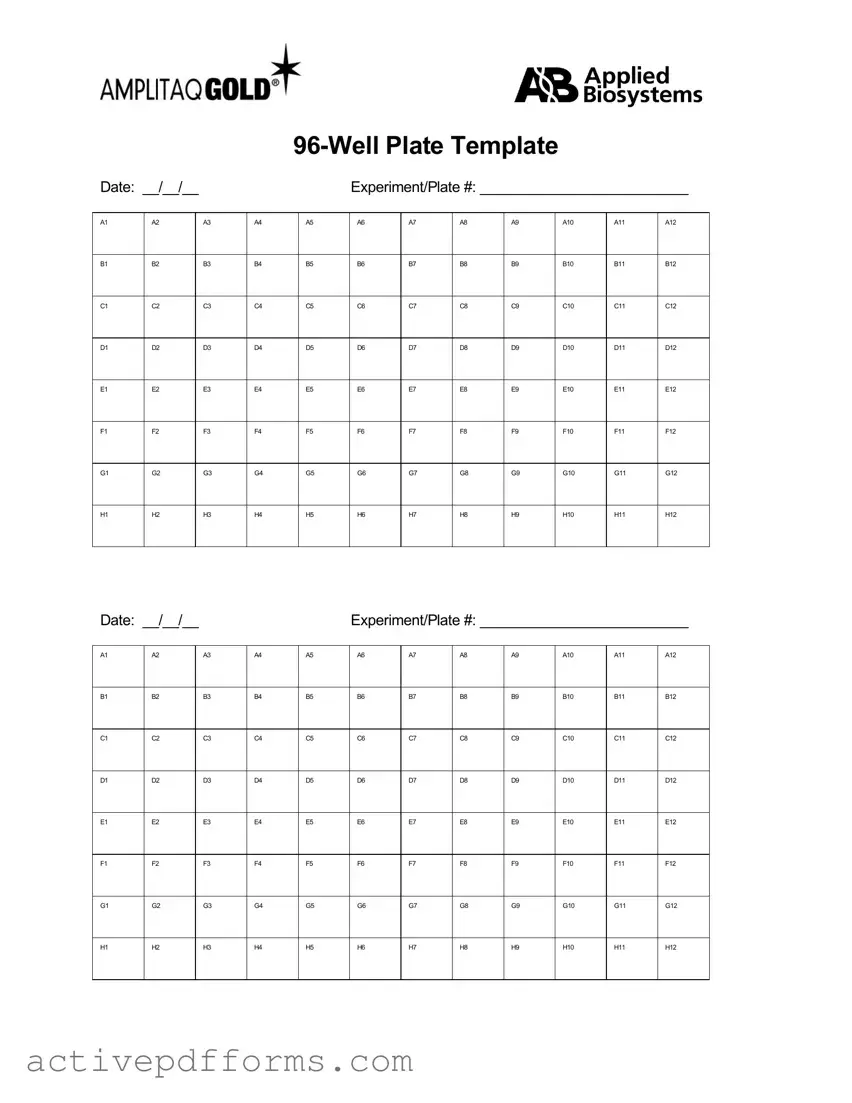-
What is a 96 Well Form?
A 96 Well Form refers to a type of microplate or microtiter plate commonly used in scientific research and diagnostic testing. This plate features 96 individual wells that serve as small test tubes for conducting various experiments, including cell culture, drug discovery, biochemical assays, and more. Its structured grid layout allows for high-throughput testing, enabling researchers to conduct multiple analyses simultaneously under the same conditions.
-
How is the 96 Well Form used in scientific research?
In scientific research, the 96 Well Form is instrumental in conducting various assays and experiments efficiently. Researchers use it to mix different chemicals, culture cells, and analyze biological or chemical reactions. Its design facilitates automated handling by laboratory equipment, providing precise and reliable results. These characteristics make it indispensable for drug development, genomics studies, and many other fields requiring high-volume testing.
-
Can the 96 Well Form be reused?
Whether a 96 Well Form can be reused depends on the material it's made from and the nature of the experiments. Plates made of materials like polystyrene are generally intended for single use, especially in sterile or sensitive assays to avoid cross-contamination. However, certain types made from more durable materials, such as polypropylene, can be washed and reused in some scenarios, provided they are thoroughly sterilized. Always consult the manufacturer's guidelines to determine the reusability of a specific plate.
-
What types of 96 Well Forms are available?
Several types of 96 Well Forms are designed to meet various research needs, including:
Flat-bottom wells for optical measurements and cell culture.
Round-bottom wells suitable for mixing and reactions.
V-bottom wells designed for sample retrieval and precipitation assays.
UV-transparent wells for DNA, RNA, and protein analysis.
Each type is tailored to optimize the results for specific types of assays or experiments.
-
How do you choose the right 96 Well Form for your experiment?
Choosing the right 96 Well Form depends on several factors including the type of assay, the nature of the samples, and the detection method. For optical assays, clear, flat-bottom plates are preferred. If conducting reactions or mixing is necessary, round or v-bottom plates might be more suitable. It's also crucial to consider the well surface treatment if cell culture is involved and the material's compatibility with chemicals used in the experiment. Always review the manufacturer's specifications and recommendations when selecting a plate.
-
Are there best practices for using a 96 Well Form?
Yes, several best practices ensure accurate results when using a 96 Well Form:
Ensure the wells are filled uniformly to avoid discrepancies in assay conditions.
Minimize evaporation by using well sealers or humidified chambers for long incubation periods.
Use appropriate pipettes and techniques to avoid cross-contamination between wells.
Calibrate and verify the settings of automated equipment regularly to ensure consistent results.
Adhering to these practices can significantly improve the reliability and reproducibility of your experiments.
-
How do you clean and sterilize reusable 96 Well Forms?
Cleaning and sterilizing reusable 96 Well Forms require careful handling to prevent damage and ensure they are free from contaminants. Typically, they should be washed with a mild detergent and rinsed thoroughly with deionized water. Autoclaving is a common method for sterilization, but it's crucial to verify that the material of the plate can withstand high temperatures. Some plates can also be sterilized with ethanol or other disinfectants. Consult the manufacturer's instructions for specific guidance on cleaning and sterilization procedures.
-
What are common issues experienced with 96 Well Forms?
Users might encounter several common issues with 96 Well Forms, including:
Cross-contamination between wells, especially when pipetting manually.
Evaporation from outer wells, which can lead to inconsistent results.
Difficulty in reading or analyzing results due to well deformation or scratches.
Chemical compatibility, as some reagents may react with the plate material.
Understanding these issues can help in taking preventative steps to minimize their impact.
-
Are 96 Well Forms environmentally friendly?
The environmental impact of 96 Well Forms depends on the material they are made from and the disposal practices. Polystyrene plates, commonly used for many disposable plates, are not biodegradable, posing environmental concerns. Some manufacturers are developing more sustainable options, including recyclable materials and biodegradable plastics. Choosing reusable plates and recycling whenever possible can also help mitigate the environmental impact.
-
Where can you purchase 96 Well Forms?
96 Well Forms are available from a variety of suppliers, including laboratory equipment distributors, scientific supply companies, and directly from manufacturers. Many offer a range of options tailored to different research needs. Prices can vary based on the material, design, and quantity, so it might be beneficial to compare options. Purchasing directly from manufacturers or specialized distributors often provides access to comprehensive product information and customer support.

